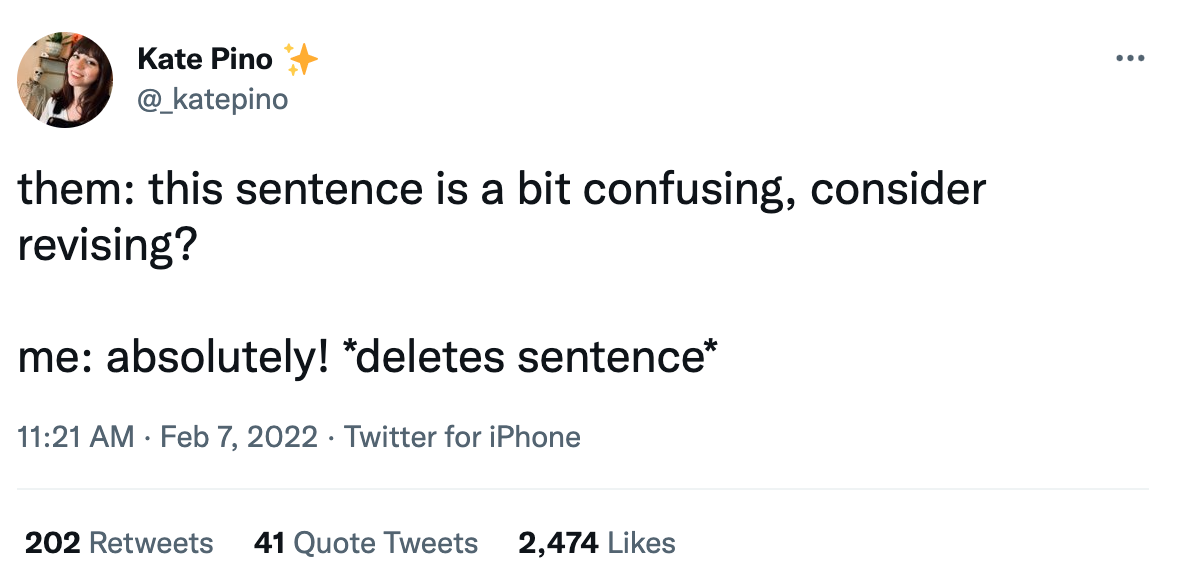Issue 44: Create, don't invent
I started reading romance novels in earnest in 2018, mainly Regency and contemporary, and have devoured so many books since. In 2020, I began writing a romance novel of my own. I originally (and mistakenly) thought that the structured nature of romance novels would make one easier to write. How wrong I was! Just because something is formulaic or has conventions doesn’t make it any simpler. It only means you have a better sense of when things aren’t working.
This past Saturday, I took an amazing afternoon-long romance/romantic comedy writing workshop and learned so much about structure, characterization, and depicting intimacy. Here are some of my takeaways for writing romance, some of which can apply to other types of writing:
Understand the genre
It’s important to understand the genre in which you’re writing, both in terms of convention and structure. In romance, for example, there’s generally a meet-cute for the two love interests, B plots for the characters, inner journeys that are encouraged by the love interest, and a HEA (Happily Ever After). Dual POV is very common, switching between the two love interests, or single POV in the first person. All of these choices have tradeoffs. The more you know each one’s strengths and weaknesses, the better you’re able to decide which best suits your story.
One workshop session focused on the rom-com structure, highlighting common pitfalls along the way. This isn’t to say that you can’t play into those character dynamics or plot points, but it helps you make more thoughtful choices.
The best way to understand the genre is to read—a lot.
Reach for specificity
Once you have that foundation, you can get creative within those boundaries. I never understood the complaint about predictability in a genre. People read genre books precisely for predictability and tropes! (Look at all the Lee Child-type airport books with Jack Reacher and his poultry-sized hands.) Constraints can enable a different level of creativity and should be embraced, not shied away from.
The key is to reach for specificity. This applies to specificity in characterization, as well as plot. Take You’ve Got Mail. It’s an enemies-to-lovers romance, with Kathleen as an independent bookstore owner and Joe as a corporate bookstore businessman. While they’re publicly rivals, they unknowingly connect over AOL. Kathleen, specifically, owns a children’s bookshop, which allows for Joe to bring in his aunt and half-brother (who are children) for story time.
One instructor suggested an approach for character building using archetypes. Start from an archetype, like The Reformed Rake or The Best Friend, then layer identity markers, physical or internal traits, and other characteristics. Another instructor emphasized that in romance, it’s about finding the specific fun and magic about these people. The specifics make for memorable characters and a satisfying resolution.
You can—and should—lean on tropes or archetypes, but drill down into the uniqueness of your story.
"Create, don't invent"
This was the through-line of all three workshop sessions. Everything you’ve generated in terms of character and set-up at the beginning is enough to create the rest of the book’s events. Character traits or occupations, for example, will incite certain events or elicit certain reactions. In romance, this creates the (temporary) breakup and eventually the happy ending. If you invent rather than create from your existing narrative, it takes readers out of the story.
This stuck with me the most because I’ve often found myself doubting the direction in which my novel is going. It helped me see that often we can give ourselves the map—storylines to juggle, threads to interweave, resolutions to be made. Even if we get lost, we can always go back and find our way.


Creative resources
- A helpful thread from Emi Nietfeld on tips for writing residency applications.
- The Sustainable Arts Foundation is offering 20 awards of $5,000 each to artists and writers with children. Applications are due February 25.
- Some interesting writing workshop opportunities: Writing with Nature workshop with Fariha Róisín and a Beginning Fiction workshop with Zan Romanoff
- Shakespeare professor and romance novelist Eloisa James on balancing a work life and writing life. I especially liked her advice to “constantly read in your genre” and know your writing is going to change.
- Six romance authors discuss the evolution of the romance genre, the importance of portraying characters of diverse backgrounds and identities, and the craft of romance writing.
Recent reads & other media
I read Having and Being Had by Eula Biss and can’t stop thinking about the contradictions and questions it raises. Structured into sections like “Accounting” and “Investment,” it’s both an audit of Biss’s own professional and artistic life as well as an interrogation into the American value system of work, ownership, and consumption. It reads somewhere in between an essay and a poetry collection, with research and pop culture analyses interspersed throughout.
E and I watched Inside Llewyn Davis, a perfect winter movie, and several rom coms: our first time watching You’ve Got Mail and a repeat viewing of Miss Congeniality. Side note: I cannot forgive Joe Fox!!
We also saw Drive My Car, a loose adaptation of several Haruki Murakami short stories. At three hours, it’s a long runtime but well-paced and has the sprawling emotional build of a novel. The protagonist is an actor and theater director, and I loved how the play-within-a-movie was constructed. It added so much depth to the film’s depiction of trust, grief and regret, and the necessity of art.
Note: Book links are connected to my Bookshop affiliate page. If you purchase a book from there, you'll be supporting my work and local independent bookstores!
~ meme myself and i ~
When your alarm goes off but it becomes part of your dream. The ennui this cat is feeling is deeply relatable. Green Goblin who?? Why you should work out in a Magic School Bus T-shirt. Trained service dog vs. bread. Teenage A24 stan discovers Twilight.

